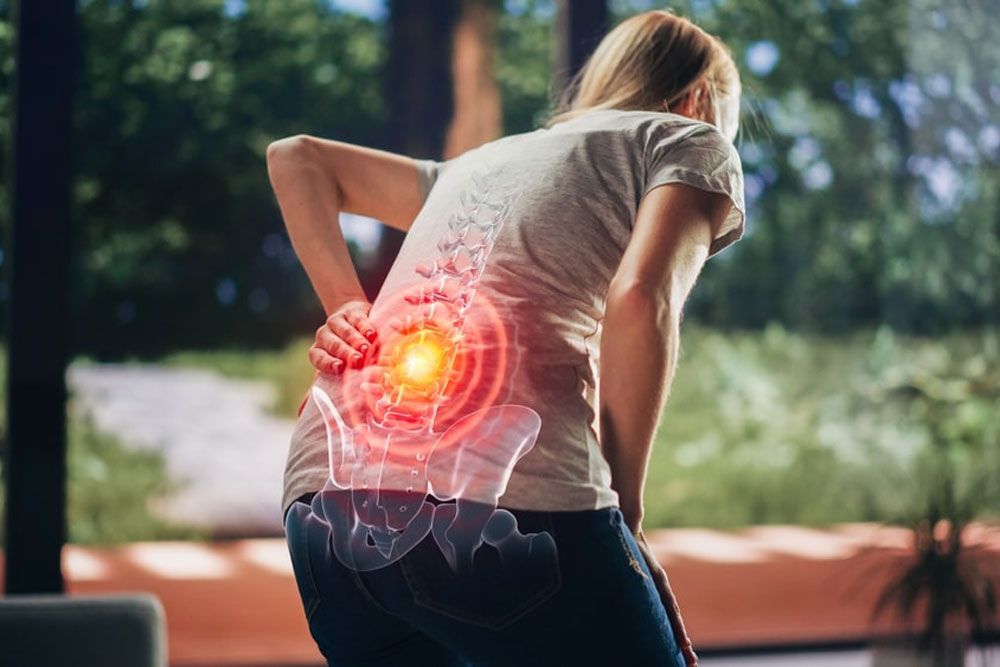UNDERSTANDING PAIN MANAGEMENT FOR ORTHOPAEDIC INJURIES
Pain management in orthopaedics is crucial for patients suffering from acute or chronic injuries affecting bones, joints, muscles, or ligaments. At Premier Orthopedics, we understand that each patient’s pain is unique, and our approach is designed to address the specific causes and symptoms of orthopaedic pain, enhancing both function and well-being.
WHEN IS PAIN MANAGEMENT NEEDED?
Pain management may be necessary when orthopaedic injuries or chronic problems cause significant discomfort, impair daily activities, or when patients are recovering from surgery. Effective pain management is key in scenarios such as:
POST-SURGICAL RECOVERY
Managing pain after orthopaedic surgery to facilitate a smoother and faster rehabilitation process.
CHRONIC CONDITIONS
Long-standing conditions like osteoarthritis or chronic back pain that persistently affect mobility and quality of life.
ACUTE INJURIES
Sudden injuries such as fractures, sprains, or muscle tears that require immediate pain relief to improve patient comfort and function.
BENEFITS OF PAIN MANAGEMENT
Effective pain management can significantly improve outcomes for patients by:
ENHANCING RECOVERY SPEED
Managing pain after orthopaedic surgery to facilitate a smoother and faster rehabilitation process.
CHRONIC CONDITIONS
Proper pain control can accelerate the rehabilitation process, allowing for quicker returns to daily activities.
IMPROVING FUNCTIONAL OUTCOMES
By effectively managing pain, patients can more actively participate in physical therapy and other rehabilitative activities, which is crucial for regaining strength and mobility.
INCREASING PATIENT COMFORT
Reducing pain improves overall patient comfort, which can also enhance mental and emotional well-being.
REDUCING LONG-TERM COMPLICATIONS
Effective pain management can prevent the progression of acute pain into chronic pain syndromes.
TYPES OF PAIN MANAGEMENT OFFERED AT PREMIER ORTHOPEDICS
Premier Orthopedics provides a wide array of pain management solutions tailored to the specific needs of orthopaedic patients, including:
INTERVENTIONAL TREATMENT
Interventional treatments are designed to directly address the source of pain and provide significant, often long-lasting relief. These minimally invasive treatments are particularly effective for patients with chronic pain or pain resulting from orthopaedic injuries. At Premier Orthopedics, we employ a variety of interventional techniques tailored to each patient’s specific condition and pain profile. Some examples of treatments can include the following:
NERVE BLOCK INJECTIONS
Nerve blocks involve injecting local anesthetics, steroids, or other medications near specific nerves or groups of nerves to interrupt pain signals from reaching the brain.
Peripheral Nerve Blocks Target individual nerves outside the spinal cord. They are commonly used for localized pain, such as in the shoulder, arm, or leg.
Sympathetic Nerve Blocks: Target the sympathetic nervous system, often used for pain conditions like complex regional pain syndrome (CRPS).
Provides immediate pain relief
Reduces inflammation
They can be diagnostic, helping to identify the exact source of pain
Improves mobility and function
A small needle is guided to the target area using imaging techniques like ultrasound or fluoroscopy. The medication is then injected to block the pain signals.
EPIDURAL STEROID INJECTIONS
Epidural steroid injections deliver corticosteroids directly into the epidural space around the spinal cord. These injections reduce inflammation and alleviate pain associated with spinal conditions.
Back Pain: Often used for conditions like herniated discs, spinal stenosis, and sciatica.
Neck Pain: Can treat cervical spine conditions causing arm or neck pain.
Provides significant pain relief for several months
Reduces inflammation in the affected area
Allows for improved participation in physical therapy and rehabilitation
A needle is inserted into the epidural space using fluoroscopic guidance to ensure accurate placement. The steroid medication is then injected to reduce inflammation and pain.
RADIOFREQUENCY ABLATION (RFA)
Radiofrequency ablation uses heat generated by radio waves to target and disrupt nerves responsible for transmitting pain signals. This technique is particularly effective for chronic pain conditions.
Facet Joint Pain: Treats pain from arthritis or injury in the spine’s facet joints.
Spinal Arthritis: Alleviates chronic back or neck pain due to arthritis.
Chronic Neck or Back Pain: Provides relief when other treatments have failed.
Provides long-lasting pain relief (up to a year or more)
Minimally invasive with a short recovery time
Can significantly improve quality of life and function
Under imaging guidance, a needle is inserted near the target nerve. An electrode is then used to deliver radiofrequency energy, creating a small lesion on the nerve that interrupts pain signals.
SPINAL CORD STIMULATOR IMPLANT (SCS)
Spinal cord stimulation involves implanting a small device that sends electrical impulses to the spinal cord to block pain signals from reaching the brain.
Chronic Back Pain: Particularly effective for pain that persists after surgery.
Neuropathic Pain: Treats pain caused by nerve damage.
Provides significant pain reduction
Adjustable settings for personalized pain control
Can reduce the need for pain medications
Electrodes are implanted along the spinal cord through a minimally invasive procedure. The device is then programmed to deliver electrical impulses designed to change the way your nervous system responds to pain.
JOINT INJECTIONS
Joint injections deliver medication directly into a joint to reduce pain and inflammation. These are commonly used for arthritis and other joint-related conditions.
Knee Pain: Treats osteoarthritis and other inflammatory conditions.
Shoulder Pain: Alleviates pain from rotator cuff injuries or arthritis.
Hip Pain: Provides relief for arthritis and bursitis.
Provides immediate pain relief
Reduces inflammation
Improves joint mobility
A needle is inserted into the joint space under imaging guidance, and medication such as corticosteroids or hyaluronic acid is injected.
REGENERATIVE MEDICINE (PRP)
Regenerative medicine techniques, such as platelet-rich plasma (PRP) injections and stem cell therapy, aim to promote the body’s natural healing processes to repair damaged tissues.
Tendon Injuries: Treats chronic tendinitis or partial tears.
Joint Pain: Helps in cases of osteoarthritis.
Muscle Injuries: Promotes healing of muscle strains or tears.
Enhances tissue repair and regeneration
Reduces pain and inflammation
Can delay or eliminate the need for surgery
A sample of the patient’s blood or bone marrow is processed to concentrate the platelets or stem cells. This concentrate is then injected into the affected area to stimulate healing.
PHYSICAL THERAPY
Incorporating physical therapy to strengthen the body, enhance mobility, and reduce pain through structured exercise programs.
SURGICAL INTERVENTIONS
In cases where conservative treatments provide little or no relief from pain or discomfort, surgical options like arthroscopy or joint replacement may be considered to directly address underlying mechanical causes of pain.
RECOVERY PROCESS AFTER ORTHOPAEDIC PAIN MANAGEMENT PROCEDURES
The recovery timeline and process can vary based on the specific treatment administered, but common elements include:
REHABILITATION
Engaging in rehabilitation programs designed to restore function and prevent the recurrence of pain.
FOLLOW-UP CARE
Regular appointments with pain management specialists to monitor progress and adjust treatment plans as needed.
PATIENT EDUCATION
Providing patients with information on how to manage their condition and pain at home effectively.
CONCLUSION
Premier Orthopedics is a leader in managing pain associated with orthopaedic injuries, dedicated to restoring health and improving the lives of our patients. With locations in Englewood, Union City, and Bloomfield, we are poised to serve the orthopaedic needs of our communities comprehensively. If you are experiencing pain due to an orthopaedic injury, do not hesitate—call 201-833-9500 to schedule a consultation with Premier Orthopedics today and take the first step toward a more active, pain-free life.






